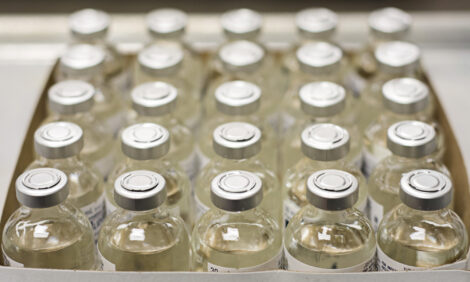



Poultry Feed with Arsenic More Problematic than Assumed?
GLOBAL - Supplements containing arsenic have been banned in the European Union since 1999 and in North America since 2013. In many countries they are still added to poultry feed to prevent parasitic infection and promote weight gain.In the journal Angewandte Chemie, scientists have now demonstrated that the danger to human health may be greater than previously thought because the metabolic breakdown of these compounds in chickens occurs via intermediates that are significantly more toxic than the initial additives.
Roxarsone (3-nitro-4-hydroxyphenylarsonic acid, "Rox") is a common feed supplement that is only slightly toxic to those animals that have been tested. However, there is not yet enough knowledge about which arsenic-containing metabolites are found in treated chickens and what risks these pose to human health. The toxicity of arsenic-containing species depends strongly on the type of compound and can vary by orders of magnitude.
In a study of 1600 chickens under controlled feeding, a team headed by Bin Hu at Wuhan University in China and X. Chris Le at the University of Alberta in Canada analyzed liver samples from birds treated with Rox.
Previously, these researchers found a number of different arsenic-containing species in chicken livers, breast meat, and waste. By using various mass spectrometric and chromatographic methods, they have now been able to identify three additional compounds.
These compounds are Rox derivatives that have an additional methyl group (-CH3) on their arsenic atom. The three methylated compounds make up about 42 per cent of the total arsenic compounds found in the chicken livers.
What causes this methylation? The researchers are pointing to the enzyme arsenic methyltransferase (As3MT), which is also involved in the human metabolism of arsenic. However, this enzyme only methylates trivalent arsenic, whereas Rox and its derivatives contain arsenic in its pentavalent form.
Tests with reduced versions of Rox have shown that the process of breaking down Rox occurs via trivalent intermediates. Tests with cell cultures have shown that these species are 300 to 30,000 times as toxic as Rox derivatives with pentavalent arsenic. It remains to be determined whether and at what concentrations these highly toxic intermediates occur in treated chickens.
In the poultry industry, Rox supplementation is usually halted five days before slaughter. Liver samples taken after this interval still contained residues of arsenic compounds at a concentration that--at least if the chicken liver is consumed--could be alarming. The researchers recommend an assessment of the extent of human exposure to various arsenic compounds to determine whether feed containing arsenic is not more problematic for human health than previously thought.








